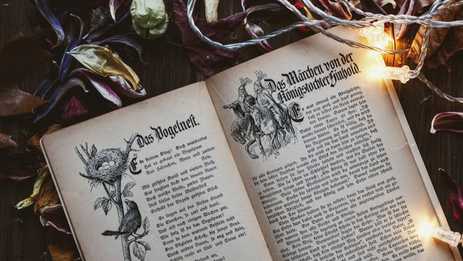Most of us are familiar with surrealist images like Salvador Dali’s Three Sphinxes of Bikini, but even though surrealism was – and still is – an important influence on literature, you might find it challenging to write in this genre.
Surrealism began life as a cultural movement after the end of World War I. It was an attempt to overthrow the then-dominant forces of rationality, which artists, writers and some political thinkers saw as having brought about the horror and strife of that era.
Strange though it may seem at a time when ‘alternative truth’ (or fake news) is beginning to look like a major force for ill, surrealists sought political and personal freedom by rejecting rational thought and society’s rules.
Andre Breton, the movement’s leader, held that this approach led to complete freedom of expression.
Most importantly of all, surrealists vowed to embrace the chaos and primal energy of the unconscious.
Surrealism and fiction
Although commentators variously state that surrealism ended either with World War II or the death of Andre Breton in 1966, I think that’s clearly not true. Even though it’s no longer a coherent movement, surrealism is alive and well, and an important subset of speculative fiction.
However, when writing surrealism, there’s one big, immediate problem to be overcome – the very nature of the unconscious. In the fifth book of The Gay Science, Nietzsche asserts that unconscious thought (which he holds to be deeper and superior to conscious thought) occurs in a mode beyond words and concepts.
That’s a challenge if you’re a writer, because you have no option but to express yourself in words and concepts. So you need to be especially loose and creative when it comes to capturing the unconscious for your readers.
Channelling your unconscious
If writing surrealism is all about expressing your unconscious, you’re going to need a reliable method of channelling its contents. One route, albeit a cripplingly expensive one, is learning to free associate in psychoanalysis.
Fortunately, more economical help is at hand from Andre Breton himself, writing in the Surrealist Manifestos:
Have writing materials brought, once you are settled in a place as favourable as possible for focusing the mind on itself. Put yourself in the most passive, or receptive, state you can. Forget about your genius, your talents, and those of others. Tell yourself repeatedly that literature is one of the saddest roads leading to everything. Write swiftly with no preconceived subject, swiftly enough that you cannot retain it, and are not tempted to re-read.
Breton’s method is otherwise known as free or automatic writing. Morning pages are also an incredibly effective way of accessing your unconscious, as you’re writing fresh from sleep, with your dream life still within reach.
I’d argue that these pages do more than simply clear the cobwebs from your consciousness. They provide you with a clear communication from your unconscious, which you can later plunder for inspiration.
What should you write and how should you write it?
Writers of surrealist fiction have developed a repertoire of techniques for bringing the unconscious into their work. Here’s a few for you to try.
- Use shocking imagery and juxtapositions – Follow the example of Gravity’s Rainbow by Thomas Pynchon, which featured synaesthetic candy tastings and fantastical voyages into (none too clean) toilets. Practice those morning pages and over time your imagination will deliver up some truly disconcerting results.
- Be sparingly, poetically surreal – As with Pynchon, surrealism can run through an entire novel like words through a stick of rock, or you can use it more sparingly. One episode in the enormously affecting Beloved by Toni Morrison is devoted to a poetic, stream-of-consciousness monologue communicating the title character’s experience of death. Struggling to express herself through the semi-verbal perceptions of babyhood, Beloved’s spirit wonders, ‘…how can I say things that are pictures?’ It’s a beautiful and devastating example of literary surrealism, as well as an inspiring example of how to confront the problem of writing the unconscious.
- Play with time – In the unconscious, time isn’t recognised. Speculative fiction writer JG Ballard – who was fascinated by psychoanalysis – was especially preoccupied with writing about situations where time is collapsed or just plain wrong. Ballard devoted whole works to this theme, but you don’t have to go so far: experimenting with non-linear narrative, epiphany and other unconventional storytelling techniques works well to evoke unconscious processes.
- Unite reality and unreality – In The Life of Pi, Yann Martel’s eponymous hero tells a magical, dream-like account of his shipwreck. The author also teases readers with a more realistic interpretation of Pi’s story, and even asks which version we prefer. But the wise reader knows that the real truth is not a simple question of either/or. To understand Pi’s experience completely, we must accept the fantastical account together with the more mundane version. That we sense the need to do this is a tribute to the way Martel unites the unreal and the real, an indispensable surrealist device.
- Don’t overlook the collective unconscious – It would be remiss of me to finish without acknowledging that the unconscious, as CG Jung believed, operates on a collective as well as an individual level. This is a major theme in Yasutaka Tsutsui’s 1993 novel Paprika, set in a society where psychiatrists can enter the dreams of their patients. The collective unconscious influences speculative fiction on a much deeper, more powerful level, too. Any work with its roots in mythology, like superhero fiction or stories based on The Hero’s Journey, expresses some aspect of the collective unconscious.
Surrealism and your work
If surrealism appeals to you, you can of course go all out and craft the next great surrealist novel. It will probably be interesting, and may even be readable, but it might not be especially mainstream (although who am I to judge – look at the enduring popularity of Hunter S Thompson’s Fear and Loathing in Las Vegas).
Fortunately, you also have the option of using the surrealist techniques explained above to add the richness and freedom of the unconscious to any kind of novel. Surrealism is a genre I find especially appealing, and I’m hoping this article will inspire a few more writers of speculative fiction to channel their unconscious into their work.





